Articles / Advice
GO Industrial x Geebungalow - A Post War Renovation
So, we have a confession. The GO team's guilty pleasure is a transformational reno.
You get it. Instagram's algorithm sure knows it.
There's something special about seeing a home transformed one room at a time, project by project, that is both inspiring and fun to be a part of. It's like reality TV, but good and actually real.
Naturally then, when we stumbled across Geebungalow's renovation, we had to stop and stare. Real everyday normal people, absolutely crushing their post-war home renovation - this is great! And they have dogs.
Embracing a clean, minimalist style, from the bathroom to the backyard, with all organic DIY methods. Neither have a secret trade, what you see is what you get and anything they do, you can do as well.
They are the most authentic definitions of weekend warriors you'll find. Roisin and Zac both work full-time in corporate roles, so the weekend is the only legitimate time they have to get things moving - sounds like most of us.
So, like good online followers, we silently witnessed as they made their way through some key interior spaces like the kitchen and bathroom, but then they came to the exterior.
That's when they posted their plans for brushing their back and side exterior fence. We had no choice but to break the silence and interject!
Traditionally, brushing or rolling has been the go-to for fence painting. The story always reads the same. Whether timber, Colorbond, steel or render, it’s difficult to achieve that prime aesthetic finish without brush marks. Then with our easy Australian conditions - *cough cough* - homeowners are only left with the labour-intensive process of brushing or rolling multiple coats to achieve longevity.
But not this day!
Whether you're new to who GO is and what we do, we are quite familiar with airless paint sprayers. Traditionally a trade tool, they have become more accessible and easier to use nowadays, so many DIYers are finding their time-saving salvation in these Magnum units.
It makes the claim as 6 x faster than rolling and 14 x faster than brushing.
How long would painting an external fence usually take? A weekend? Maybe two? Try 4 hours with a sprayer.
Multiple coats. Flawless finish. Set to last. 4 hours.
By pressuring paint to atomisation - no air, hence "airless" - a fine fan of paint is projected into every crevice of the fence surface in a matter of seconds. Simply choose the right spray tip for your paint and application, set up your unit, and get it done.
Congratulations, you’ve now been inducted into airless paint spraying.
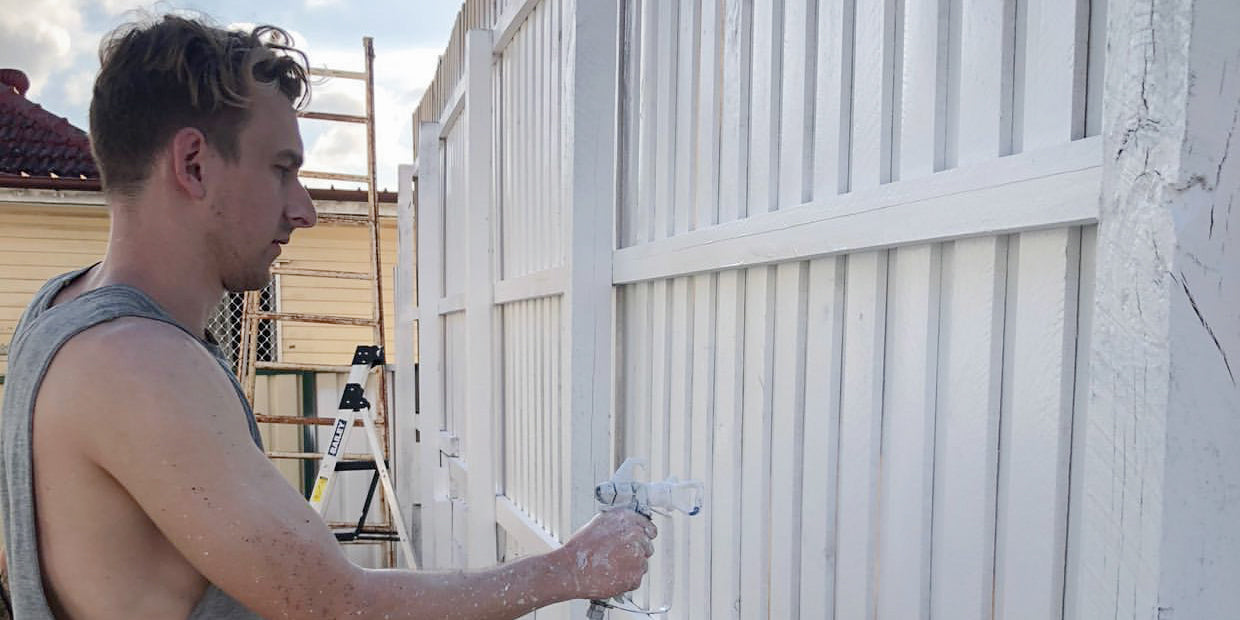
How to use an airless paint sprayer. Is it hard?
From Roisin and Zac’s experience, we’d have to say no. They had never used an airless sprayer before and they were up and running with only 15 minutes of training.
Of course, there is a learning curve, but that's like all things. What we hear most often is just getting used to how fast you should move while spraying and what spray tip to use in what scenario; things that get easier with use.
The essential fundamentals stay the same though: dial-in the spray fan, 30cm away from the surface, always start spraying while moving, stay perpendicular - no wrist flicks.
There are a few other tips and tricks so, as a guide for you, here is a 4-part video series on:
- How to set up your sprayer
- Essential technique for beginners
- How to clean your sprayer
- How to install spray tips, guards and extensions
You can watch those here.
If you’ve still got questions, leave a comment and we’ll get back to you.
Is a paint sprayer worth the money or should I just roll instead?
For the full-home renovation, like Geebungalow, it's absolutely worth the money. As Roisin and Zac said:
"We love our spray gun and have noticed a huge difference in the quality and longevity of the paint job compared to where we used a brush, not to mention it is so much quicker!"
Airless paint sprayers actually lay on a thicker coat than your conventional methods, that's why you get a longer-lasting result. This does mean that paint sprayers use more paint, but you don't need four coats to get coverage - it's a win.
You wouldn't use it for EVERY paint job. If you're just touching up a post, save yourself some prep and clean up time by grabbing a brush. But any project that you'd like to knock out in no time, think sprayer.
Anything that may trigger a deep sense of procrastination or desire to do small random tasks in avoidance; that's the money. A room, a fence, staining your deck, refinishing your old weatherboards - remember to check for lead paint - a stretch of wall; all prime sprayer territory.
There are sprayers for every budget and project size, from just a few pieces of furniture up to a two-story 5 bedroom home and perimeter fencing.
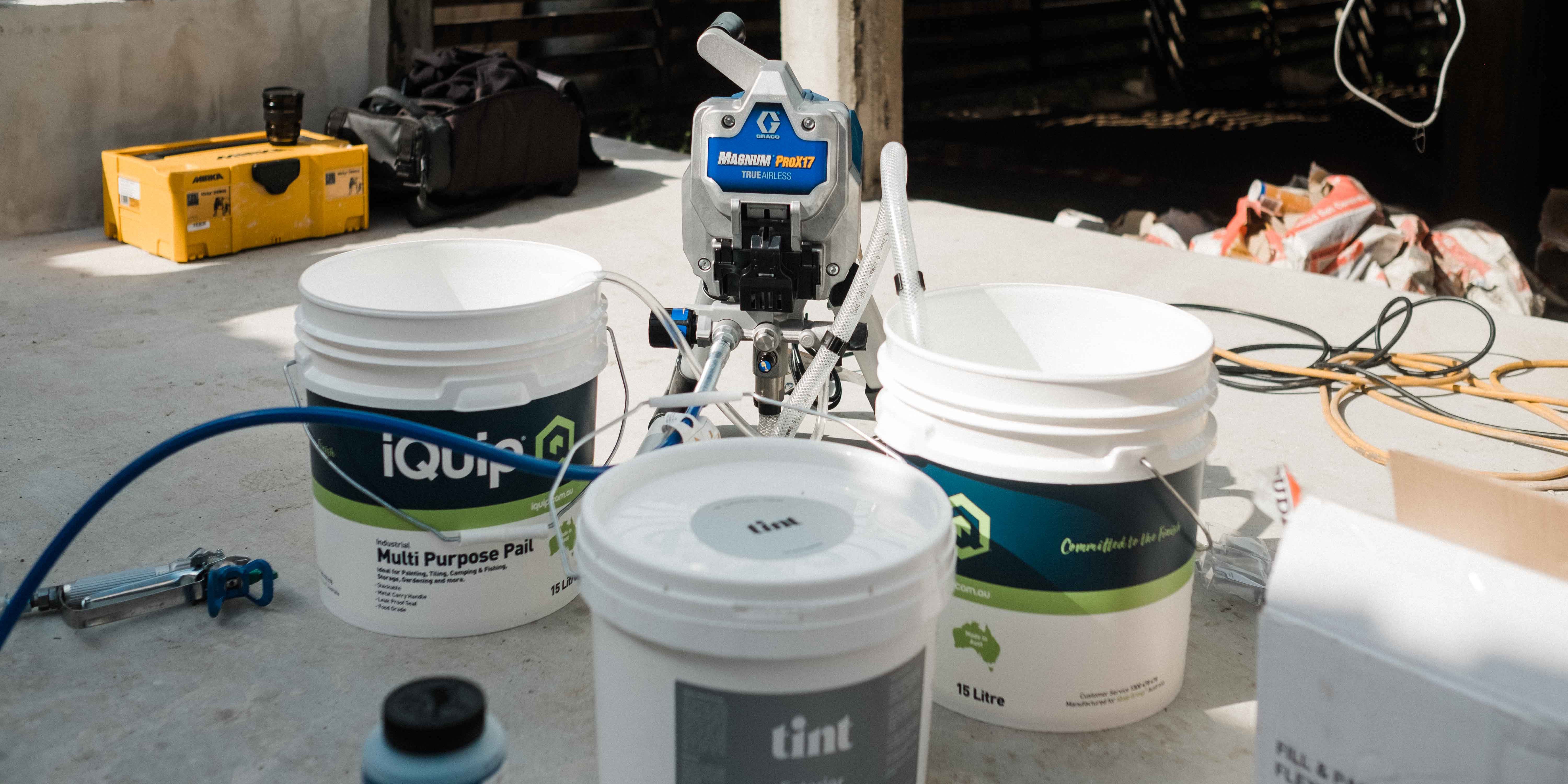
In our time-poor society, many people wouldn’t have time to do the conventional brush and roller themselves and thus opt for a contractor. For painters around here, that might be $700 for a day’s work. Our every-now-and-again-sprayer, the Project Plus, goes for a one-time payment of under $600.
Use it more than once and you’re saving yourself some money and still getting the contractor-quality finish.
Choosing the right paint sprayer can be intimidating. So, if you're unsure where to start, we break down our sprayers into three helpful project categories. There you can identify your project and what capabilities and money you might need to spend. You can see that here.
We are also building a catalogue of unboxing videos to get to "hands-on" experience with the sprayer via good ol' YouTube. So, be sure to check those out if you're interested.
Does it take more time to prep and clean for spraying than rolling?
The least glorious aspect of painting is hands down the prep and cleaning.
Filling nail holes, sanding it back, wiping it down, protecting the floor or furniture - you haven't even started painting. Then you paint and get some endorphin encouragement from seeing the space change, but now you've got to clean. Someone get me a coffee.
Honestly, prepping for spraying will take longer than prepping for rolling but not dramatically. The only key difference is the absolute assurance of having the whole window and entryway surfaces covered. Having said that, there is super affordable and easy gear made for doing that in moments.
If nothing else, the extra time it does take is compensated by the fact an entire medium-sized room is painted in sub-5 minutes. That's good math.
If you're a little unsure about the prep side of things, check out this Room-Based Prep Kit. A surface prep essentials kit put together by professional painters. Just choose the number of rooms and gear everything you need in one package.
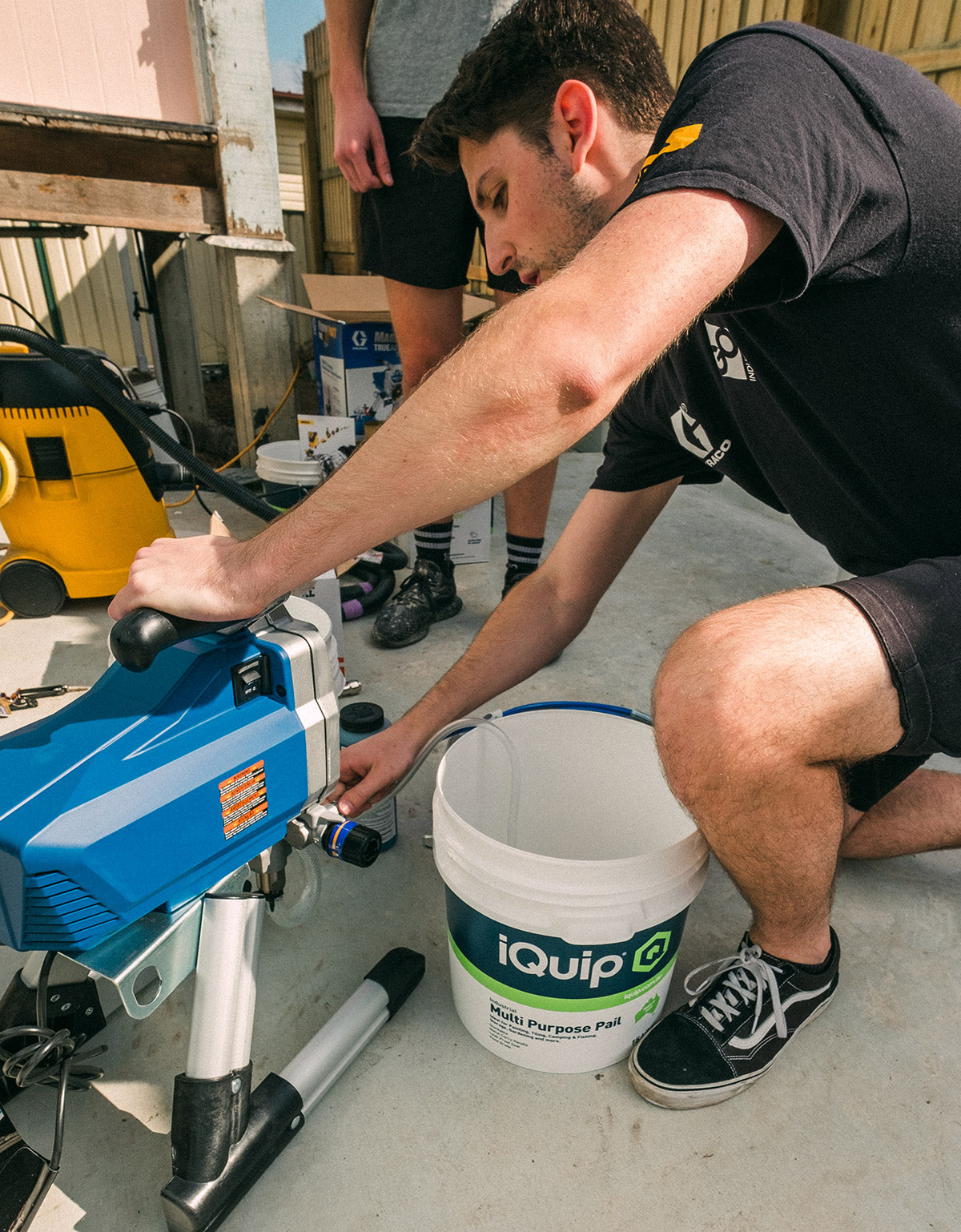
Do airless paint sprayers produce overspray?
If you’re worried about overspray, paint wastage and all of its associated concerns – you’d be right.
Well, sort of.
Overspray is generated in two ways: too much pressure and equipment inconsistency.
If a pump cannot generate enough pressure or generates too much pressure, the paint will not atomise properly causing spitting, tailing or overspray. If the pressure is dialled in correctly but is inconsistent, you will have similar finishing issues.
Your equipment is the secret sauce to reducing overspray.
Quality units have pumps dialled in to work seamlessly with the length and width of the hose that compliments the design of the spray gun that comes with the highly engineered spray guard and tips.
This is what separates the decent sprayers from the best sprayers. If you pick up something cheap from local hardware, expect what you pay for. Inconsistent pumps and a higher chance of breakage.
We aren't Graco, but this is why we exclusively sell Graco. Very solid gear built with 90+ years of R&D. It's nice when you can trust your gear.
So, do paint sprayers product overspray? Yes. Can you reduce that? Yes. Is it much of an issue? Not really.
Most overspray will be caught within the 30cm around your spray fan by your surface protection. For the remaining mist, when it lands on a surface and drys you can usually just sweep it off. Rene from Coastal Hills Haven - also a first-time airless sprayer user - said:
"By the time it settled on the ground it was like a fine dust that just swept off the pavers."
Back to Geebungalow
The drop sheets were laid, the sprayer primed and a couple of spray fan tests later, things were ready to go.
Since the fence has overlapping panels, each panel would require two passes of paint at varying angles to get complete coverage. Thus, we opted for a smaller spray fan to avoid putting too much paint on the surface and getting drips.
Speaking of paint, Roisin and Zac went for Tint Paint's water-based Exterior. We've used this paint extensively and it is formulated to spray (aka. really nice paint). The FFLP514 & FFLP312 spray tips worked a treat for it, giving both a large spray fan and a small spray fan option.
Geebungalow's Kit:
- Sprayer: Graco Magnum ProX17
- Spray Tips: Rac X Fine Finish Low-Pressure FFLP514 & FFLP312 tips
- Cleaning: Graco Pump Armour 950mL Bottle
- Extension: Rac X Tip Extension - 40cm
- Hose: Standard 15m plus extra 15m hose with a hose joiner, to run a total of 30m
The outcome? Take a look for yourself.
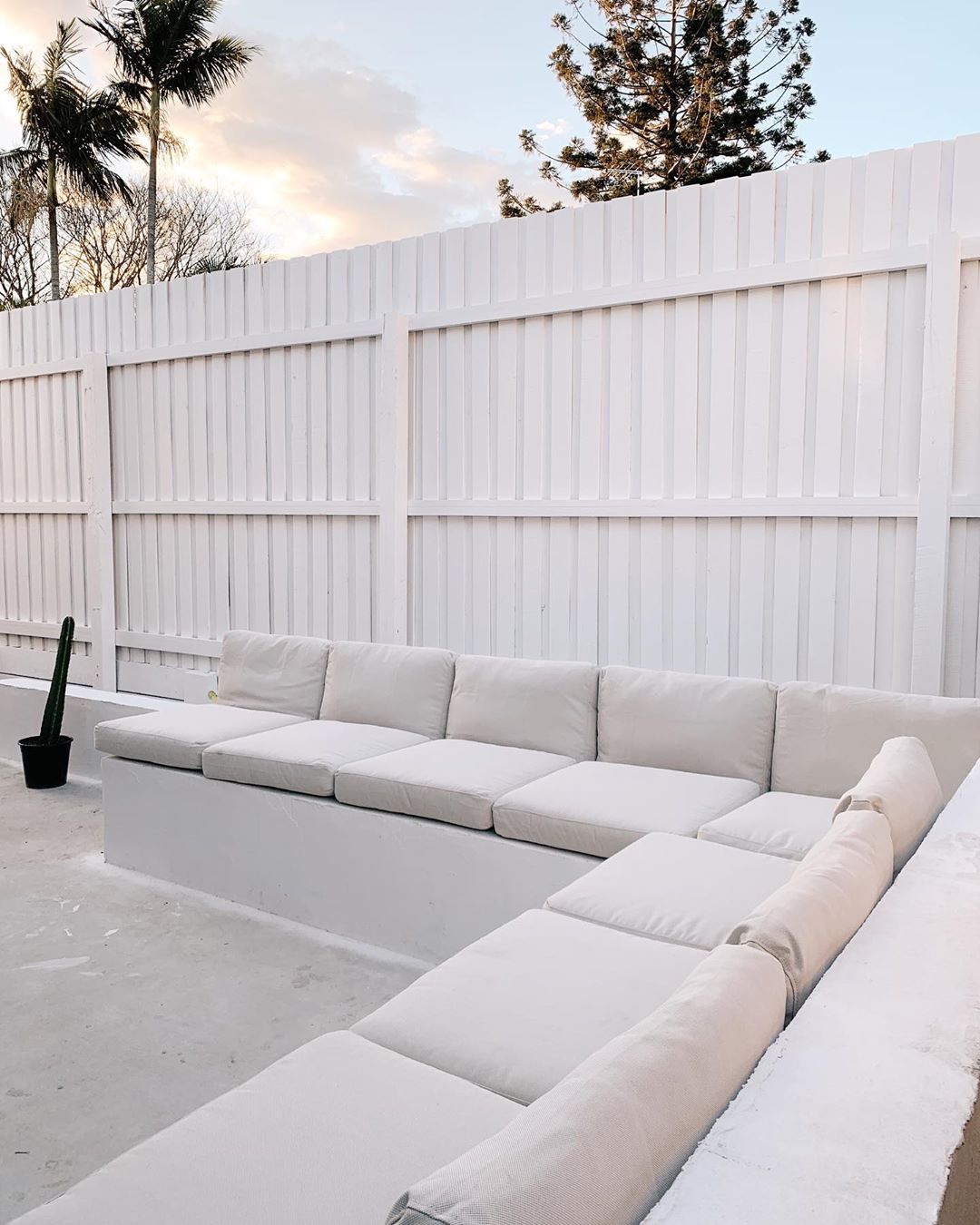
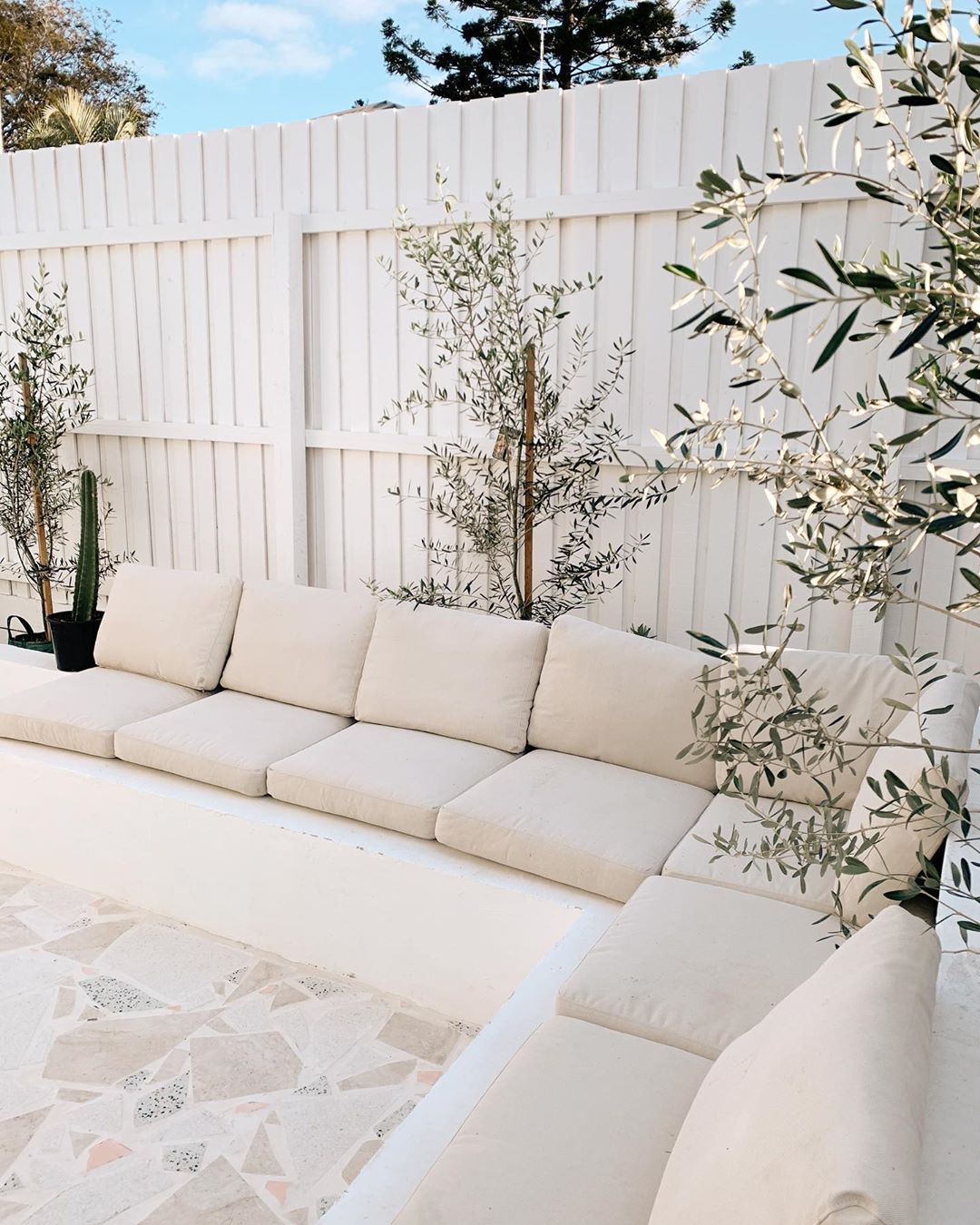
Thank you, Roisin and Zac, for opening your home to us! We were grateful for the opportunity to have a hand in a such a great project.
We’re looking forward to our next renovation intervention!
Want to see more DIY transformations?
Other helpful Articles
- Choosing a selection results in a full page refresh.
- Opens in a new window.




![Minimalistic Coastal Scandi Reno - Top Questions Every DIY Painter Wants to Know When Starting to Spray [Q&A] - GO Industrial](http://goind.com.au/cdn/shop/articles/minimalistic-coastal-scandi-reno-top-questions-every-diy-painter-wants-to-know-when-starting-to-spray-qa-420101.jpg?v=1739931521&width=533)
